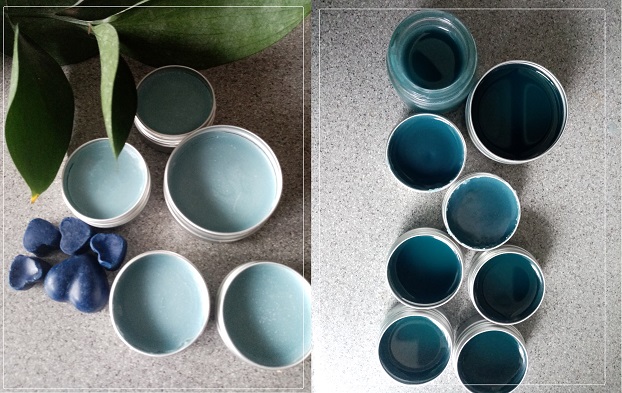
In the DIY Aromatherapy Lab :Salve | Giveaway
In my last post, I provided a recipe for a Blue Tansy soothing and healing salve. I have been in my Aromatherapy Lab this week and have created my version of this salve. What’s more I am offering four (4) as giveaways (postage not included), if are interested in trying it.
In this post, however, I thought I would go back to basics with a few FAQ’s on salves, before continuing with more recipes and tips on how to make your own.
What are Salves?
Strictly speaking salves are made up herbal oil and beeswax, however the term salve and balm have today, become interchangeable.
The base of a salve is made up of wax, mainly beeswax and oil, to which herbs, essential oils, vitamin and butters can be added.
How are salves used?
Salves are applied direct to an area of your skin using a clean finger. It is not applied across the whole area of face or body. They can be applied several times a day, as necessary to deal with a specific condition.
How do salves work?
Each salve will have its specific properties, however, in most cases, whilst the salve will penetrate the skin to a degree it generally works by resting on the surface of the skin, healing, burns, irritations and hydrating the skin. It’s generally light enough to allow your skin to breathe and for conditions like eczema it can be concocted to act as a barrier, sealing moisture into the skin as it soothes.
What type of salve can I make?
You can make a salve for literally any skin condition, on any part of your body. By having a basic recipe, you can vary it to deal with any condition. The most common balm is a healing balm, which I recommend for every home.
With one basic salve recipe you can adapt it for different uses, including headaches, hair, face, lip balm, elbow softener, nail cuticle treatment, chest rub, nappy rash, mosquito repellant, feet blisters, solid perfume. The list really is endless.
How long will a salve last?
Since salves does not contain water, they have a long shelf life and can last over a year.
Have a go – Basic Skin Salve, starter recipe
This is a very simply basic recipe that I use particular for skin care. It can be adapted by using different essential oils or adding herbal extracts.
Ingredients
| 10g | Shea Butter |
| 10g | Cocoa Butter |
| 10g | Olive Oil |
| 20g | Sweet Almond Oil |
| 10g | Beeswax |
| 16 drops | Essential Oils |
Instructions:
Place the butter, sweet almond oil, olive oil and beeswax, slowly in a heatproof container and place in a pan of heated and simmering water to melt.
Once melted remove from the pan and stand and allow to cool slightly.
Add your essential oil.
Pour the mixture into containers and leave to cool until solid.
When fully cooled, place lids on containers and label
Giveaway Month: Blue ansy Healing Salve:
Contains
- Beeswax
- Coconut oil
- Calendula Infused Oil
- Blue Tansy Essential Oil
Pay postag and get your giveaway sale here.
Next post covers. Adapting your Salve



Hello Lovely Lady!
The salve is amazing!!!
It helped to allievate a chronic skin condition that would not go away, no matter what I tried.
Thank you for the sample!
Thank you for your feedback Montreece. Very please you got a good result with this salve. It is one always keep in my first aid kit. It’s great for multiple of purposes.